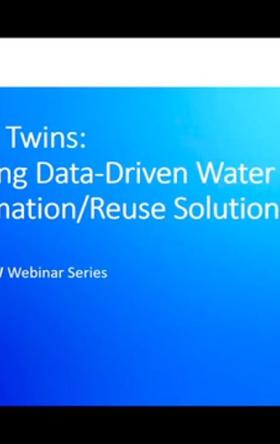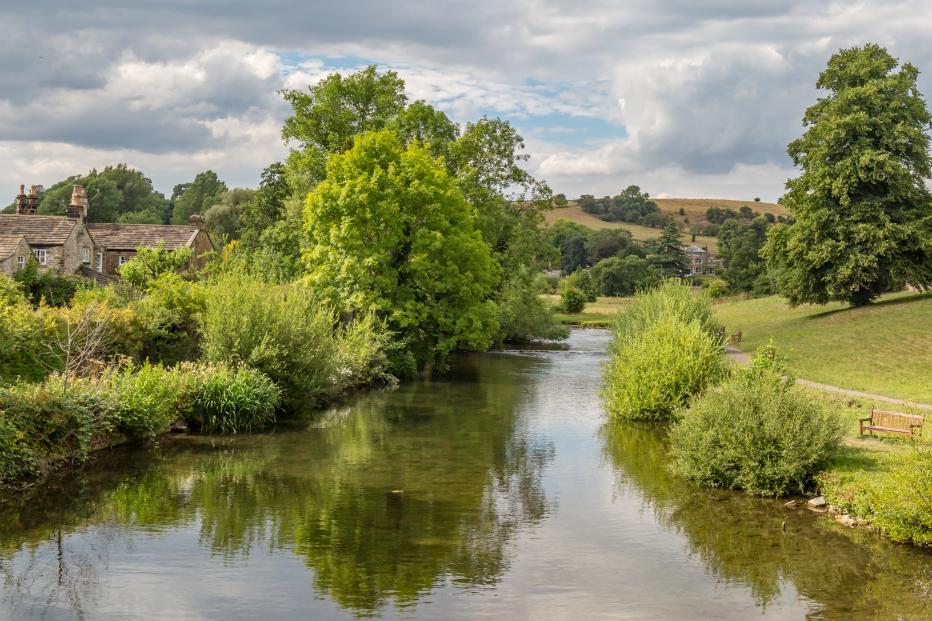
In the face of climate change and the biodiversity crises, we need to come together as a society and use holistic approaches such as integrated systems thinking to combat water catchment challenges like flooding, drought, water quality and biodiversity loss. Regulators and organizations can better tackle these challenges by working together to break down their operational silos and funding cycle constraints within the framework of a catchment plan.
Pressure growing on governments to act on the state of the environment
Most recent data shows that only 14% of English rivers have met good ecological status, a requirement set by the European Union Water Framework Directive, and no rivers have reached good chemical status [1] . Consensus is that the improvements have plateaued and that more should be done to continue the progress[2]. In parallel, there has been increasing public pressure on the U.K. Government and water companies to improve water quality, particularly around reducing spills from combined sewer overflows (CSOs), driven by more people swimming, canoeing and paddleboarding in rivers, lochs, lakes and seas.
Water quality isn’t the only issue affecting our environment. The degradation of habitats and biodiversity across the U.K. is occurring at pace, with more than half of our natural biodiversity lost since the start of the industrial revolution. This has left the U.K. as one of the lowest-rated nations in the world for the quality of its ecosystems, driven primarily by agriculture and urban spread[3].
Climate change and population growth are adding more strain to our stressed environmental system through direct and indirect impacts on flood risk, water demand, land use, sewerage and water quality, food security, energy, and the continued release of carbon associated with electricity, heat, transport, manufacturing, construction and agriculture. As a result, organizations and governments across Europe, as well as globally, are realizing that their current approaches to planning and managing water and landscapes needs to change in order to progress towards more towards more sustainable catchment management and to halt environmental decline.
Legislation and funding aligning to support new ways of working
Legislation and funding are starting to align with the step change needed. In 2020, the U.K. Government committed to protecting 30% of U.K. land to boost biodiversity[4], and published their Net-Zero Strategy[5] in 2021 to support U.K. ambitions to limit global warming to 1.5°C. Supporting the vital step change towards improving water quality, the U.K. Government recently passed the Environment Act, which promotes elements of its 25-Year Environment Plan, including a number of amendments, with new legal duties to tackle sewage discharges.
Prior to this, the U.K. Government’s Department of Environment, Food and Rural Affairs (Defra) set out proposals to improve long-term water resources and drainage planning, and the Water Services Regulation Authority (Ofwat) has recently published its guidance for Long-Term Delivery Strategies (LTDS)[6]. Through LTDS, which require water companies to put their five-year business plans (termed Price Review 2024- PR24) into the context of a 25-year delivery strategy, it’s hoped that environmental outcomes will not be constrained by funding cycles that do not always deliver the right solution. Within this framework, the industry needs to be ambitious as part of PR24, and regulators need to work together to make this a reality.
One of the U.K. Government’s commitments to publish a plan to reduce sewage discharges has just been met, which will provide the legislative foundations to see this change realized. The Storm Overflow Discharge Reduction Plan in August 2022[7] aims by 2035 to have eliminated 75% of storm overflows affecting the most important protected sites (3,000 discharges), and to have eliminated 70% of discharges into bathing waters (4,620 discharges). By 2040 the plan aims to have eliminated 40% of storm overflows (160,000 discharges), and to have eliminated 80% of storm overflows (320,000 discharges) by 2050. These are challenging targets that are being supported by £3.1 billion of investment by 2025 to address storm overflows, supported by a further £1.3 billion by 2027 to protect and improve the environment and quality of England’s waters.
How a OneWater approach is integral to this change
Jacobs’ OneWater approach is a framework for bringing organizations together to co-plan, design, fund and deliver sustainable water catchment management through all stages of planning and implementation to realize “best value” outcomes, i.e. those that provide the highest overall value, including economic, environmental and social value, rather than simply least cost[8]. Our approach is based on three foundational elements:
- All water has value
- Water catchment challenges are interconnected with people and nature
- Water catchment solutions must be sustainable, inclusive and equitable, not just now, but in the future
OneWater embeds the realization of wider environmental and social benefits through total value assessments that consider a whole host of sustainable and innovative solutions. Implementing Nature-based Solutions (NbS), for example, alongside digital technologies and traditional “grey” solutions, it’s possible to deliver best-value catchment outcomes from planning through to delivery and at a variety of scales. And by bringing together stakeholders, including Catchment-Based Approach hosts, who are striving for the same, and a wide portfolio of partners early on, our approach also aims to optimize available co-funding and finance opportunities, including from the private sector. This will deliver more outcomes, enhance climate resilience, support nature recovery, and share benefits, costs and risks among a wider portfolio of partners and stakeholders.
“This is an exciting opportunity to truly work collaboratively with our clients. At the heart of this approach is being able to integrate and connect organizations and stakeholders working within a water catchment,” says Jacobs Head of Water Catchment Management – U.K. and Europe Amy Bentley. “It also allows us to bring together our diverse capabilities within Jacobs, and it is underpinned by one of our core strategic accelerators, climate response, which focuses on end-to-end solutions that are co-created with clients.”
In a recent webinar series, delivered in partnership with Environment Analyst, we explored how Jacobs is supporting our clients through a OneWater approach to addressing water and environmental degradation. We also discussed the challenges and what it will take for water companies to deliver Ofwat’s requirement of greater environmental and social value, using a catchment and nature-based solutions approach through co-design, co-funding and co-delivery.
Webinar 1: Co-developing resilient catchment solutions and pathways
In this webinar we demonstrated the importance of an independent systems integrator role in bringing together diverse stakeholders to agree on a common vision, and how this has played out in real-life scenarios.
Across the Greater Manchester region, United Utilities, the Environment Agency and Greater Manchester Combined Authority have partnered to identify and break through the many barriers to closer collaboration and the realization of wider environmental outcomes through the management of water issues, including the ambitions of ongoing projects we're delivering under a Place-based Planning program. We are all uniquely placed to support the partnership by leveraging our deep connections within the region and our water and environment management expertise to help identify opportunities and overcome constraints.
Webinar 2: Counting what matters– what do we really mean by “best-value” solutions?
Here, we explored the positives and negatives of the current ways of assessing “total value”, and where we need to get better evidence to provide a more robust analysis.
Ofwat has stipulated that water companies should adopt catchment nature-based solutions wherever possible, and evaluate options through a total value framework to derive best value rather than lowest-cost solutions. The hope is that this will result in more NbS as preferred options. While this is a great first step, the body of evidence as to NbS’ cost and reliability is patchy. There is also a perception that NbS are a cheaper alternative to “grey” infrastructure, yet at present they can be more expensive to implement, operate and maintain than traditional solutions. To tip the scales towards NbS, we need to properly account for their wider benefits and, in some cases, the unintended consequences of grey infrastructure. We also need better ways to account for and manage the uncertainty that is inherent to working with nature and across multiple organizations over the long term.
Webinar 3: Co-funding and partnership delivery – how can we maximize investment in catchment solutions?
In our third webinar, we looked at how we can approach this requirement, using a combination of traditional and innovative approaches, to create new market funding and finance opportunities. Money from customers’ water bills can only go so far and, in the face of a changing climate, population growth and ageing infrastructure, how our water industry funds capital delivery and making our networks more resilient will only become more constrained. In its methodology for the U.K. water industry national environment program , the Environment Agency requires water companies to consider options that are co-designed, co-delivered and co-funded, working towards an aspirational target of 20% co-funding of non-statutory actions, and seeking further co-funding beyond this level at their discretion. The collaborative planning and development of solutions open the door to wider funding opportunities. There are also broader opportunities to engage with the private sector early in the planning process, which has the potential to attract private investment to optimize investment returns.
Fundamental to a catchment approach and the development and delivery of truly sustainable solutions is a deep understanding of catchment-specific challenges and what matters to catchment stakeholders. This understanding can only be developed through bringing people together and collaboratively developing a vision and objectives for the catchment. This may sound simple on paper, but in practice it can be complex, with stakeholders holding contrasting views and competing objectives over a range of timescales.
Despite the complexity, the prospect for change has never looked so positive – legislation and public pressure are driving and pushing respectively in the same direction on multiple fronts; funding will be available to tackle some of the big underlying challenges; and the tools, technology and understanding available to the industry are catching up with our ambition to meet these complex challenges. We are therefore optimistic that, despite the scale of challenge ahead, the winds of change in water and environmental management will result in a positive legacy for people, places and nature.
[2] https://www.gov.uk/government/publications/developing-the-environmental-resilience-and-flood-risk-actions-for-the-price-review-2024/water-industry-strategic-environmental-requirements-wiser
[4] https://www.gov.uk/government/news/pm-commits-to-protect-30-of-uk-land-in-boost-for-biodiversity
[5] https://assets.publishing.service.gov.uk/government/uploads/system/uploads/attachment_data/file/1033990/net-zero-strategy-beis.pdf
[6] https://www.ofwat.gov.uk/wp-content/uploads/2022/04/PR24-and-beyond-Final-guidance-on-long-term-delivery-strategies_Pr24.pdf
About the authors
Phil Raynor, Director of Operations, Water and Environment

Phil brings 21 years of working in the environmental and flood risk industry. With core training in the environmental sciences and extensive experience in a wide range of technical areas, Phil is heavily involved in both the delivery and technical assurance of major U.K. infrastructure projects, drawing on his broad experience base, attention to detail and strategic mindset to lead teams in the development of appropriate solutions.
Alison Flynn, Associate Director, Water and Environment

Alison has 12 years of experience in the industry and is a Chartered Water and Environmental Manager, Chartered Environmentalist and Chartered Scientist. She has been a technical project manager on numerous multi-disciplinary projects, involving integrated catchment management and nature-based solutions. She has a strong technical background in fluvial geomorphology and sustainable river management in the water sector, having pioneered new approaches to asset resilience in a utilities company.

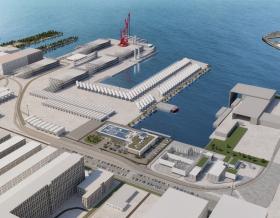



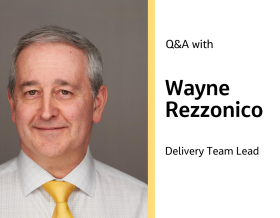



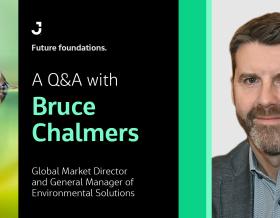

.jpg?h=c7c14dee&itok=FmPI2126)










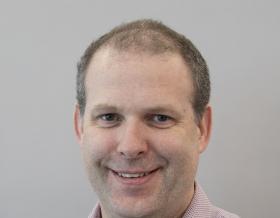







_0.jpg?h=8a6d63f3&itok=5vsqFiQH)









.png?h=1314d3d4&itok=rFs9mG95)









